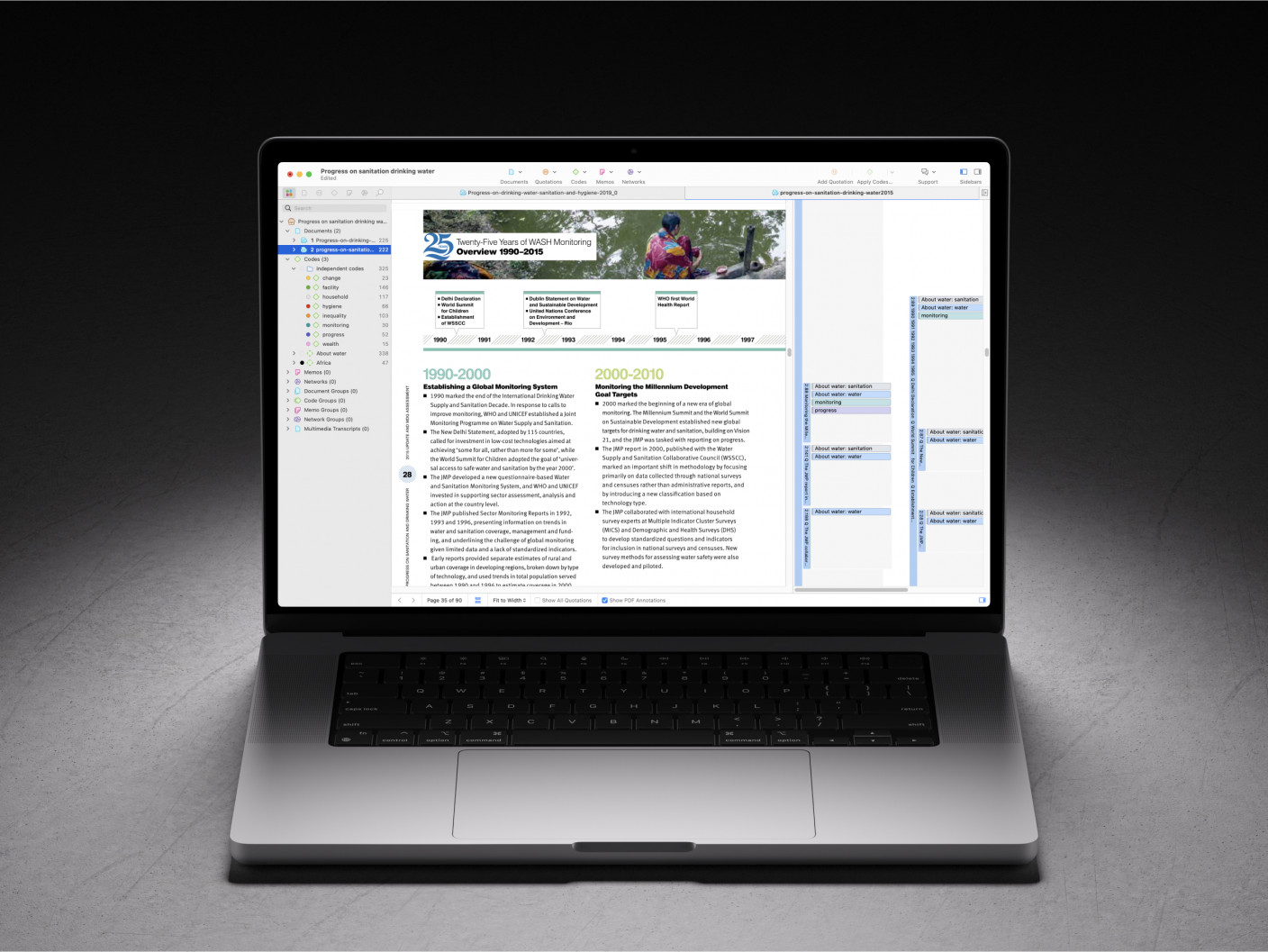- What is Mixed Methods Research?
- Advantages of Mixed Methods Research
- Challenges in Mixed Methods Research
- Common Mistakes in Mixed Methods Research
- Mixed Methods Research Paradigms
- Validity & Reliability in Mixed Methods Research
- Ethical Considerations in Mixed Methods Research
- Mixed Methods vs. Multiple Methods Research
- Mixed Methods Research Designs
- How to Choose the Right Mixed Methods Design
- Convergent Parallel Design
- Explanatory Sequential Design
- Exploratory Sequential Design
- Embedded Mixed Methods Research Design
- Transformative Mixed Methods Design
- Multiphase Mixed Methods Research Design
- How to Conduct Mixed Methods Research
- Sampling Strategies in Mixed Methods Research
- Data Collection in Mixed Methods Research
- Triangulation in Mixed Methods Research
- Data Analysis in Mixed Methods Research
- How to Integrate Quantitative & Qualitative Data?
- How to Interpret Mixed Methods Research Findings?
- Software Tools for Mixed Methods Data Analysis
- How to Write a Mixed Methods Research Proposal
- How to Write a Mixed Methods Research Paper?
- Reporting Results in Mixed Methods Research
- Mixed Methods Research Examples
- How to cite "The Guide to Mixed Methods Research"
Transformative Mixed Methods Design
Transformative mixed methods design stretches beyond traditional mixed methods designs, and it is used when the researcher uses a theoretically based framework. Transformative mixed method designs focus on advancing the needs of underrepresented or marginalized populations. It places the researcher within the research design to increase empathy and sensitivity towards the participants' experiences. It is meant to recommend specific changes and increase social justice.

Introduction
According to Creswell and Plano Clark (2011), the transformative design has been a topic of discussion among researchers because of its transformative nature. Teddlie and Tashakkori (2009) discounted ideological perspectives as a criterion for classifying mixed methods research designs and argued that the designs relate more to the content purpose of the study rather than the methods decisions of the study. On the other hand, other researchers specifically argued that the transformative perspective affects every stage of the research and design.
Transformative designs vary depending on the perspective they apply. For example, some designs include feminist, racial, ethnic, sexual orientation, or disability theory (Mertens, 2009). Its purpose is to improve social justice and advance policies by identifying imbalances and empowering individuals and communities. Thus, the methods are used for advancing goals such as challenging the status quo and developing solutions.
Researchers usually choose this method when they determine a mixed methods study is necessary to address social changes and recognize the needs of marginalized populations. Researchers must have a good working knowledge of the framework applied and carefully conduct the study in a manner that avoids further marginalizing the population under study.
Philosophical assumptions in transformative design
The transformative design is guided by an "umbrella" paradigm that includes political action, empowerment, and change-oriented perspectives. This paradigm integrates advocacy and participatory worldviews to address systemic inequities and promote change through research.
Researchers using this paradigm actively focus on empowering disenfranchised groups. Collaboration with participants is central. Participants are engaged in various stages of the research, such as defining questions, collecting data, and analyzing results. The design seeks not only to understand social phenomena but also to use findings as a tool for enacting tangible improvements in policies, institutions, or societal structures.
How to design a transformative mixed methods research study?
According to Creswell and Plano Clark (2011), the transformative design process can be summarized in four steps:
- Define the problem and search the literature: When defining the research problem, it is essential to consider the perspectives of diverse groups, particularly those affected by discrimination and oppression. By conducting a deliberate and inclusive literature search, you can uncover concerns that may otherwise go unnoticed. Engaging directly with the community of interest ensures that the problem is defined collaboratively, reflecting their lived experiences and priorities. Building trust with community members is critical and requires transparency, active listening, and sustained engagement. Researchers should avoid relying on deficit-based theoretical frameworks that focus on shortcomings within marginalized groups. Instead, the framing of research questions should include both positive and negative aspects to provide a balanced perspective. Questions that explore power dynamics and authority in institutions and communities can lead to transformative insights and contribute to meaningful social change.
- Identify the research design: To address complex issues effectively, mixed methods research offers a robust approach by integrating qualitative and quantitative methodologies. This combination allows researchers to capture the multifaceted nature of problems and meet the varying needs of stakeholders. Ethical considerations must underpin the research design, ensuring the dignity, autonomy, and welfare of all participants. It is important to avoid creating or exacerbating inequalities, such as withholding treatments or interventions from certain groups in experimental procedures. A thoughtful and equitable research design enhances the validity of findings and fosters trust and cooperation among participants.
- Data collection instruments and methods: The design of data collection should aim to benefit the community being studied. This involves ensuring that the methods used are credible and acceptable to participants. Communication with community members during data collection should be effective and culturally sensitive to encourage genuine participation and engagement. Additionally, data collection should be structured in a way that opens opportunities for community involvement in driving social change. By integrating these considerations into the research, data collection becomes a collaborative process that empowers participants and enhances the relevance and impact of the findings.
- Analyzing, interpreting, reporting and using results: Analysis of research findings should be an iterative process that remains open to generating new hypotheses. This approach allows for a deeper exploration of emerging patterns and trends. Subgroup analyses are particularly important to identify differential impacts across diverse groups, providing a nuanced understanding of the data. The framing of results should focus on illuminating power relationships within the studied context, helping to clarify systemic dynamics. Reporting findings in a way that facilitates action and social change is a vital step in ensuring that the research contributes to meaningful outcomes. By presenting results in an accessible and actionable manner, researchers can support efforts to address inequities and foster progress within the community.

Strengths
Researchers use transformative mixed methods designs to integrate traditional mixed methods designs into transformative research. These designs share the benefits of mixed methods while offering additional advantages:
- Researchers use advocacy or emancipatory perspectives, emphasizing social justice and equity.
- This approach supports participants' active involvement in the research process, promoting collaboration and representation.
- The research is designed to address and help rectify inequalities or injustices.
- By blending qualitative and quantitative methods, the design enhances the utility of findings for communities and stakeholders, ensuring they are relevant and actionable.
Challenges
Researchers may also face several challenges when using the transformative design. This approach can encounter procedural difficulties similar to basic mixed methods designs. Additionally, the transformative design presents these unique challenges:
- The literature provides limited guidance on implementing mixed methods in a transformative way. To address this, you can review published mixed methods studies that utilize a transformative lens.
- You may need to justify the transformative approach by explicitly discussing its philosophical and theoretical foundations in the study proposal and report.
- Establishing trust with participants is crucial. To ensure its effectiveness and ethical integrity, the research must also be conducted in a culturally-sensitive manner.
Transformative design variants
Transformative mixed methods designs integrate qualitative and quantitative research while prioritizing social justice, advocacy, and marginalized voices. These designs rely on a theoretical framework that shapes data collection, analysis, and interpretation, ensuring that research findings address power imbalances and lead to action-oriented outcomes. There are three primary transformative variants, each emphasizing a specific lens:
The feminist lens transformative variant
This variant is grounded in feminist theory and aims to challenge gender-based inequalities by amplifying the voices of women and gender minorities. Researchers using this approach often prioritize participatory methodologies, ensuring that participants contribute to the research process and that findings lead to tangible improvements in gender equity. Data collection methods may include in-depth interviews, focus groups, and surveys designed to explore gendered experiences. Quantitative data is often used to highlight systemic patterns of discrimination, while qualitative insights provide depth to individual experiences.
The disability lens transformative variant
This variant is based on disability studies and advocates for the rights and inclusion of individuals with disabilities. Research conducted within this framework challenges ableist perspectives, emphasizing accessibility, inclusion, and the lived experiences of people with disabilities. Data collection methods often involve participatory research, where individuals with disabilities co-design research instruments and contribute to data interpretation. Mixed methods approaches help capture both statistical trends in accessibility and service provision and the nuanced personal experiences of people with disabilities.
The socioeconomic class lens transformative variant
This variant focuses on economic disparities and social class-related inequalities. It is often rooted in critical theory, emphasizing structural barriers that maintain poverty and social exclusion. Researchers using this approach investigate how economic status influences access to education, healthcare, and other resources. Quantitative data can reveal disparities in income, employment, and education, while qualitative methods provide deeper insight into the lived experiences of economically marginalized populations. This approach often includes community-driven research to advocate for policies that promote social mobility and equity.
Examples and key studies
In a study by Sweetman, Badiee, and Creswell (2010), they reviewed 13 studies that adopted the transformative framework and evaluated its potential for addressing social justice issues and empowering marginalized communities. In the study, the authors recognized 10 transformative criteria, including:
Community-relevant problem: Does the research openly reference a problem affecting a marginalized community?
Theoretical lens: Do the authors explicitly declare a guiding theoretical lens, such as feminist or critical race theory?
Advocacy-oriented research questions: Are the research questions or purposes written with an advocacy stance?
Discussion of diversity and oppression: Does the literature review include discussions on issues such as oppression, inequality, and diversity?
Appropriate participant labelling: Are participants labelled in ways that reflect respect and accuracy?
Community benefits: Do data collection and outcomes provide tangible benefits to the community studied?
Participant engagement: Did participants initiate or actively engage in the research process?
Power relationships: Do the results address power dynamics within the context of the research?
Facilitation of social change: Are the results used to encourage or facilitate meaningful social change?
Explicit use of transformative framework: Do the authors explicitly state the use of a transformative framework in their study?
Newman and Wyly (2006) applied a transformative design to study the impact of gentrification in New York City, particularly regarding displacement. The article critiques mainstream claims that gentrification benefits everyone and causes minimal displacement. The authors challenge the notion, often promoted by urban policymakers, that gentrification is inherently good, even for those adversely affected.
The authors conducted a mixed-method evaluation, using the New York City Housing and Vacancy Survey and field interviews. They analyzed displacement trends from 1991 to 2002, investigating its scope and impacts. The study design aligns with some transformative principles such as focusing on the impacts of gentrification on marginalized groups and addressing systemic urban inequities. However, the study did not directly engage in advocacy or propose an action-oriented agenda to address displacement or does not include community members as co-researchers or active contributors to the research process.
Conclusion
Transformative designs in mixed methods research focus on driving social justice, advocacy, and meaningful change. Unlike convergent, explanatory sequential, exploratory sequential, or embedded designs, which aim to integrate data for validity or complementarity, transformative designs embed a strong philosophical foundation rooted in equity and inclusion. They go beyond understanding phenomena by actively promoting change, amplifying marginalized voices, and challenging power dynamics within the research process. With a clear focus on ethical considerations, participatory involvement, and social impact, transformative designs create research that is both academically rigorous and a catalyst for real-world transformation.
References
- Creswell, J. W., & Plano Clark, V. L. (2011). Designing and Conducting Mixed Methods Research (2nd ed.)
- Sweetman, D., Badiee, M., & Creswell, J. W. (2010). "Use of the Transformative Framework in Mixed Methods Studies." Qualitative Inquiry, 16(6), 441-454.
- Newman, K., & Wyly, E. K. (2006). "The Right to Stay Put, Revisited: Gentrification and Resistance to Displacement in New York City." Urban Studies, 43(1), 23-57.


